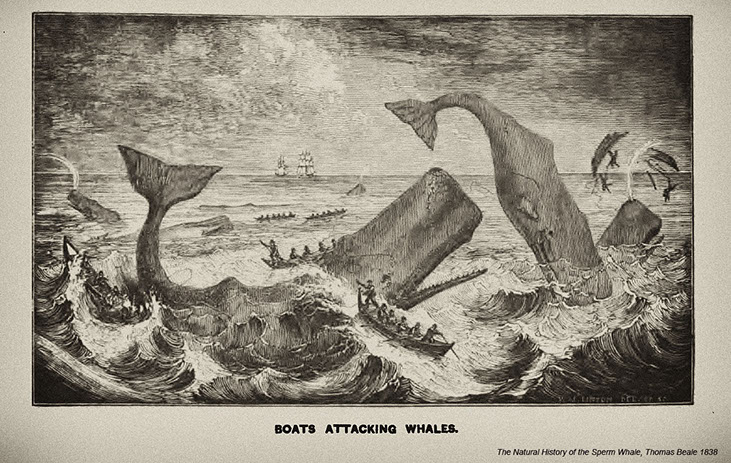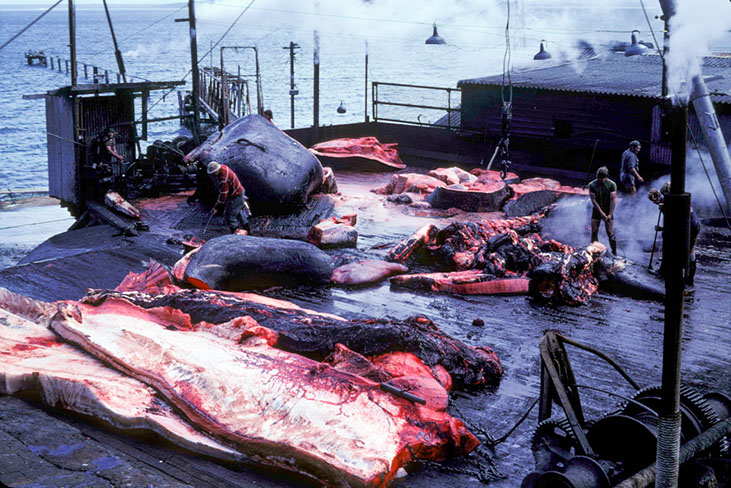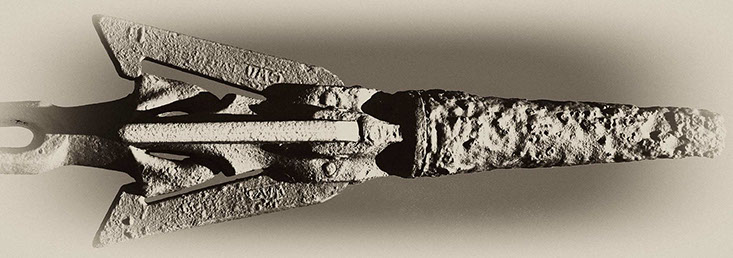
.jpg?crc=4264561578)
The Discovery of Oil - A False Dawn for Whales
This cartoon from Vanity Fair in 1861 (Source, Wikipedia) depicts a tongue in cheek grand ball with whales celebrating the discovery of oil in Pennsylvania in 1859. The discovery of oil in commercial quantities did herald a decline in the first wave of whaling as petroleum products and widespread electricity generation provided substitutes for many whale products.
Whilst it may had led to a pause in whaling intensity, it was a false dawn as new technology was to arm the hunters with new and ruthless tools of trade. In 1870, Norwegian Svend Foyn patented the grenade harpoon gun and changed the odds permanently in favour of the whaler.


Scenes from the Flensing Deck - Albany, Australia 1977
We took these images of sperm whales on the flensing deck at the Cheynes Beach Whaling Station in 1977 a year before its closure. The station began in 1952 with humpback whales as the target species. In 1955, sperm whales were also targeted.
The International Whaling Commission banned the taking of humpbacks in Australian waters in 1963. The humpback population traversing this coastline was thought to be now depleted to mere hundreds and chasing this species was rather fruitless anyway.
The last sperm whale was taken on November 20 1978 after a concerted multi-year campaign by environment activists (well documented in Chris Pash's The Last Whale, 2008).
Whilst community sentiment was turning against whaling, the reduced demand for whale products had taken its toll and economics were a significant factor in the station's closure.

Norwegian Bay Whaling Station - Western Australia
A pile of twisted and rusting steel marks the abandoned whaling station on the Ningaloo section of the Pilbara coast. Whaling commenced in 1913 with a catch of 900 humpback whales and then 2000 in 1914. As the onshore factory was not constructed until 1915, they were processed on factory ships. Catches were lower in the following years and it closed in 1916.
3442 humpback whales were taken in the years 1925-28 when the station reopened and closed again. It reopened again in 1949 through to 1957 when the focus moved to the whaling station at Carnarvon.


No Finer Oil - Sperm Whales
The spermaceti organ in the double barrelled shaped head of the sperm whale contained the finest oil known and fetched three to five times the price of oil rendered from blubber. In the pre-petrochemical age, its odourless burning ensured its status as a preferred oil for our lamps. It also made superior smokeless candles and lubricants.
By the late eighteenth century the British and French followed America in the whale trade using American expertise. Sperm whale oil lit our homes, streets and lighthouses and lubricated the machinery of the industrial revolution.
Norwegian Sven Fyon's invention of the explosive harpoon replaced the both the traditional hand thrown harpoon and lance. No longer did the hunter have to row the whaleboat almost onto the whale's back and throw the harpoon to make fast. No longer did the whalers have survive the 'Nantucket Sleigh Ride' as the terrified whale tried to escape. No longer did the whalers have to drive home a hand lance into their exhausted prey to complete the kill. The bow mounted harpoon cannon on a mechanically propelled vessel changed the game completely.